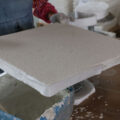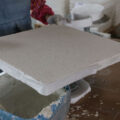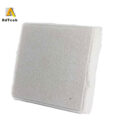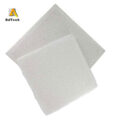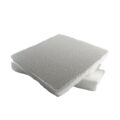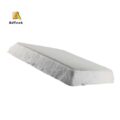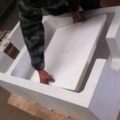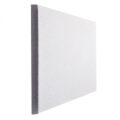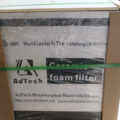Ceramic foam filter production process includes the selection of raw materials, produce, drying, and packing.

Selection of Raw Materials
(1) Foam plastic is the most critical material in the raw material of ceramic foam filters. It should have sufficient elasticity, the holes should be uniform, and it should have the ability to completely restore the original state after filling with porcelain slurry. The wire meshes that make up the holes in the foamed plastic are divided into thick and thin. The large wire meshes are thicker and more porcelain paste is hung. The smaller hole meshes are finer and less porcelain paste is hung. After firing, the former has high strength, and the latter has low strength.
(2) Porcelain paste is a kind of water-like suspension adhesive with A1 and O as the main components. The fired porcelain body should be resistant to corrosion by aluminum melt, durable, and not softened at a certain high temperature. The lead and arsenic content of the various components that make up the porcelain body should be low. When the ceramic foam filter blank is manually or mechanically kneaded, the porcelain paste can be firmly bonded to the foam plastic wire mesh.
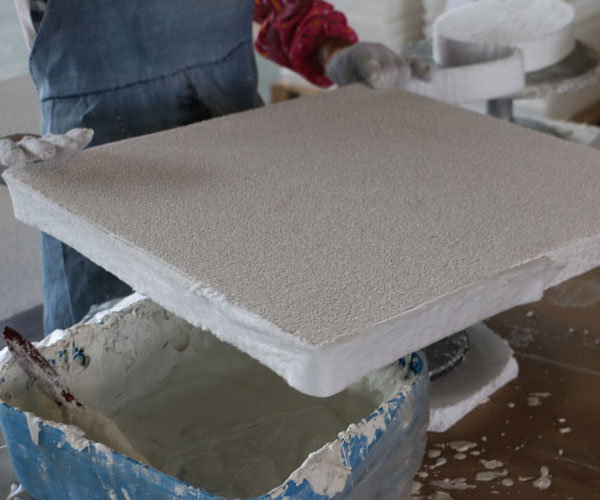
Ceramic Foam Filter Production Process
The production process of the ceramic foam filter is as follows:
Cut the foam plastic block → mix with porcelain paste → grouting → squeeze out excess porcelain paste as soon as it is dried or air dried → burn off the plastic → sintering-firing and firing to check out the finished product → packaging.
When grouting, it should be noted that if the porcelain paste is too thick, it is not easy to pour into the foam plastic. If it is too thin, it will be easy to settle on the plastic to form an uneven hang slurry.
Sintering Process
It can be roughly divided into two stages:
- Evaporation period. The free water of the porcelain paste and the water on the surface of the material have been basically removed during the drying process. The evaporation period refers to the removal of crystalline water of foam plastics and materials. The heating rate during this period should not be too fast, because the crystalline water is volatilized outward by tightly adhering to the inside of the thin ceramic body layer. And with the change of material state, if the heating rate is too fast, the porcelain layer will be destroyed. And the lower density reduces the strength of the ceramic foam filter, or even becomes a waste product.
- The period of vitrification to porcelain. At 500 ~ 900 ℃, a large amount of crystallization water escapes from the material, and the low melting point of the material and the AIO component will mutually dissolve and diffuse. The ideal reaction is to generate fine aluminum alumina silicate between the particles of each composition. The particles are bonded to each other, the resulting low-melting bond is called a glass body. However, the amount of glass body should not be too much, otherwise it will reduce the heat resistance of the ceramic foam filter and promote softening. Too little will reduce the strength of the ceramic foam filter. The rising temperature in the vitrification period is slightly higher than that in the evaporation period, which is preferably 2 ~ 3 ℃ / min.
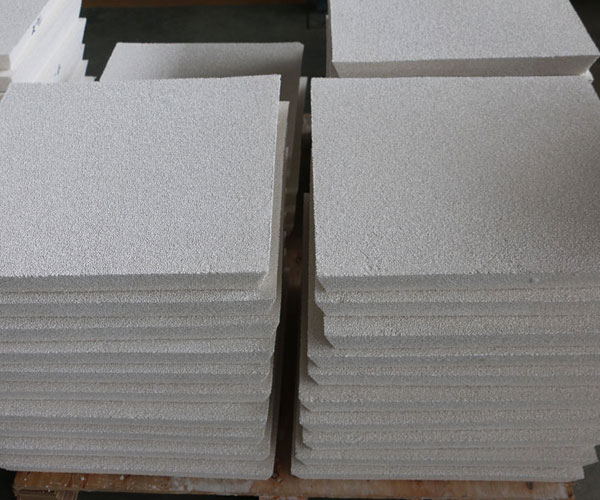
AdTech Ceramic Foam Filter Advantages
- Excellent strength and thermal properties
- Resistant to molten aluminium attack
- Available in various sizes and grades
- Reduced scrap
- Better surface finish of castings
- Increased metal quality


